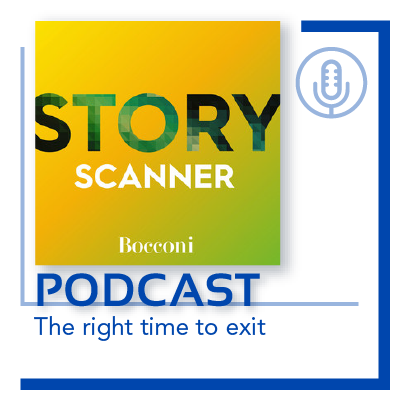
The Right Time to Exit
THE BEST MOVE THAT FOUNDERS OF TECH STARTUPS CAN MAKE IS HAVING A GOOD STRATEGY FOR SELLING THE COMPANY: IT SHOULDN'T BE TOO EARLY, BECAUSE THE INVENTION WOULDN'T BE DEVELOPED ENOUGH TO GET THE RIGHT PRICE, AND IT SHOULDN'T BE TOO LATE, BECAUSE IF THE TEAM DOESN'T ACHIEVE UNICORN STATUS, IT COULD ACTUALLY BURN DOWNEvery startup dreams to turn into a “unicorn,” but the reality is that technology startups fail more often than succeed. Data show that failure rates among technology startups reach 90 percent in some industries. After all, this is not surprising: although many inventions begin their journey to commercialization in start-ups, startups are not necessarily the best vehicles to develop and profit from inventions. Large established companies are usually better equipped in scaling up and commercializing these inventions. An acquisition by a large incumbent is often the best exit strategy for a technology startup: the lucrative culmination of a journey that started with an innovative idea and has gone through several rounds of financing, milestones, periods of despair and moments of euphoria. The market for start-up sale has been exuberant in recent years. Alphabet, Amazon, Apple, Google and Microsoft alone have acquired more than 60 companies since January 2020, many of them technology start-ups funded in the new millennium.


If a start-up aims at culminating its journey through an acquisition, when should it pull the plug?
Waiting too long in selling the business can be risky because technology start-ups are more prone than incumbents to scale-up and execution errors that might dilute their value for potential buyers and, in some cases, bring them to bankruptcy. An early sale eliminates this risk. On the other hand, there are fewer potential buyers that can acquire early-stage technology start-ups. A primary reason is that to assess and integrate emerging technologies, buyers need to invest in science and basic research, which is complex and costly. Only a few firms can afford to make these investments, thereby limiting the number of potential buyers of early-stage technology start-ups. This translates in less competition that depresses the acquisition price. Fewer buyers also mean a lower likelihood of a good fit between the start-up’s technology and the buyer’s complementary assets, thereby reducing the value creation of start-up sale.


Ultimately, startups face a dilemma between selling early at a lower price or investing in the development of their invention into a proper innovation and selling later at a higher price.. but only if they survive.
In a recent research, I find that the capability of the founding team plays a crucial role in explaining the timing of exit. Startups with less capable teams devise strategies to be acquired by large industry incumbents early on in their lifecycle. Startups with more capable teams go into stealth mode, seeking financing to develop further their invention and aiming for a late exit. Finally, start-ups with founding teams of intermediate capabilities adopt flexible strategies, immediately scouting for early buyers but eventually developing the invention to preserve the option of a late sale.
 Other factors have been shown to influence the timing of startup sale. Early-stage technology startups usually face a good deal of uncertainty. However, over time, information about the quality of a startup’s idea is revealed to the market. Buyers are initially unwilling to offer a high price, especially when it is difficult to disentangle good ideas from bad ideas. Waiting gives thus a chance to the startups to prove themselves. As uncertainty dissipates startups are able to capture a larger fraction of the value they create by negotiating a higher price for their venture. However, this generates a tendency to wait too long before making a deal with the risk of failing before shaking hands with a potential buyer.
Other factors have been shown to influence the timing of startup sale. Early-stage technology startups usually face a good deal of uncertainty. However, over time, information about the quality of a startup’s idea is revealed to the market. Buyers are initially unwilling to offer a high price, especially when it is difficult to disentangle good ideas from bad ideas. Waiting gives thus a chance to the startups to prove themselves. As uncertainty dissipates startups are able to capture a larger fraction of the value they create by negotiating a higher price for their venture. However, this generates a tendency to wait too long before making a deal with the risk of failing before shaking hands with a potential buyer.The human touch is also important. Some technology entrepreneurs might prefer championing the development of their technology, while others might focus on idea development and exit as soon as possible, often becoming serial entrepreneurs. Similarly, some technology entrepreneurs might be overoptimistic and refuse early offers in the hope that the market will soon understand their true value, whereas others might prefer to cash out and live without stress.
Ultimately, while there is no single path to success, developing a strategy around the timing of exit is imperative for all technology startups.
by Andrea Fosfuri, full professor at Department of management technology
